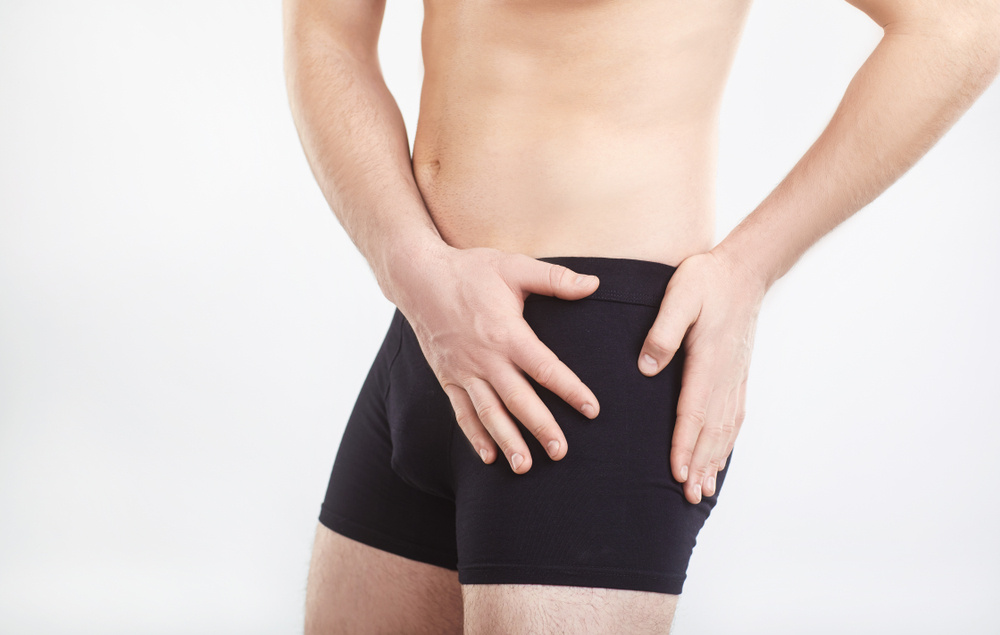Hip pain occurs in 1 of every 4 women over the age of 50. Many men also experience annoying hip pain. Pain felt on the outside of your hip is commonly caused by irritated tendons or the bursa. Your bursa is a fluid-filled sack that acts as a cushion between your bone and tendons. Your gluteus medius tendon is a likely cause of pain on the outside of your hip. If your hip pain is increased when you lie on your side, walk, or climb stairs, this article is for you.
Steroid injections are used to treat pain from the bursa or tendons. This provides substantial short-term pain relief for many people. Unfortunately, the pain is likely to return. Sometimes the pain becomes even more severe than before receiving the injection. Thankfully, the latest research shows exercise is extremely effective in the long-term for treating hip pain caused by an irritated bursa or tendon.
Exercise is Proven to Help Your Hip Pain
A 2018 study published in the British Journal of Sports Medicine investigated the effects of exercise, corticosteroid injection, or no treatment in people with hip pain. The exercise program was administered by a physical therapist over 14 sessions. After one year, 79% of patients performing the exercise program were a treatment success. Only 58% of the patients who received an injection and 51% of patients who received no treatment were judged to be a treatment success after one year.
Exercise Program Basics for Hip Pain
Exercise is prescribed only after an initial examination is performed by your physical therapist. First, exercises are prescribed to target activation of your gluteus medius muscle and tendons. Isometric exercises are ideal in the early stages of rehabilitation. When performed properly these exercises cause little to no pain. Dynamic exercises are integrated next, first in lying positions, and then in standing.
You must always maintain proper technique. Your exercises will only be progressed when you reach certain goals. Gradual progressive loading of the injured tendons and muscles leads to the best long-term outcome. The following 5 exercises are examples of exercises we prescribe for hip pain.
Isometric Hip Abduction in Lying
Lie on your back, with your knees slightly wider than hip-width. Place a pillow under your knees and a belt around your lower thighs. Very slowly and gently push your knees apart against the belt. Push only enough to take up the slack in the belt. All the big muscles you can feel around your hips and thighs remain soft and relaxed. Be aware of deep gentle tension at the side of your hips. Hold the isometric contraction for 10 seconds and perform 10 repetitions.
2-Leg Bridge
Begin lying on your back with your hips flexed and your feet lined up with your shoulders. Perform the bridge by lifting both hips from the floor. Avoid excessively arching your lower back. Achieve the bridge position by extending through the hips. Hold the bridge position for 2 seconds then return to the starting position. Lower your body back down in a slow and controlled manner. Perform 2 to 3 sets of 10 to 20 repetitions.
Isometric Hip Abduction in Standing
Stand with your feet slightly wider than your hips. Place your hands on the sides of your hips so you can feel the glute muscles activate. Slowly and gently imagine you are going to slide your legs apart. Think about doing “imaginary splits”. Think of a slow buildup of muscle activation, rather than a sudden movement. Be aware of deep gentle tension at the side of your hips. All the big muscles around your hips and thighs remain soft and relaxed.
If you struggle to relax your larger muscles, start this exercise by leaning your back against a wall. Hold the isometric contraction for 10 seconds and perform 10 repetitions.
2-Leg Squat
Stand with your feet hip to shoulder-width apart and your weight equally on both feet. About 2/3 of your weight should be back on the heels. Begin with your thighs and buttocks relaxed. Next, bend your hips and knees, moving your hips backward, and your body forward, like when you sit down. Keep your knees facing straight ahead. Keep your back long and relaxed.
Your physical therapist will tell you how deep to go – usually, start at 1/3 or ½ of the distance to a chair. Move slowly down, pause briefly, and then return slowly to standing. Focus on pushing through your heels and feeling the tension in your buttocks. Perform 2 to 3 sets of 8 to 12 repetitions.
Lateral Band Walk
The lateral band walk is done with an elastic band tied around your ankles. Stand in an upright position with your feet together. During this exercise, your knees and hips are flexed about 30°. Place your hands on your hips. Begin sidestepping by leading with one leg over a distance slightly wider than shoulder-width.
It is important to keep your toes pointing straight ahead and your knees over your toes throughout the exercise. Maintain tension on the band so your feet do not touch. Do 3 slow steps in one direction followed by 3 steps in the opposite direction. Each cycle constitutes 1 repetition. Do 6-8 repetitions each set.
Get More Help for Your Hip Pain
Hip pain involving your bursa or tendons is debilitating. You don’t have to suffer from pain any longer. These 5 exercises are only a small sample of exercises that will help.
Meet with your physical therapist if you are struggling. Your physical therapist will continually assess your injury and progress your exercise program based on your goals. Contact us today if you have hip pain or questions about which treatments are right for you.

